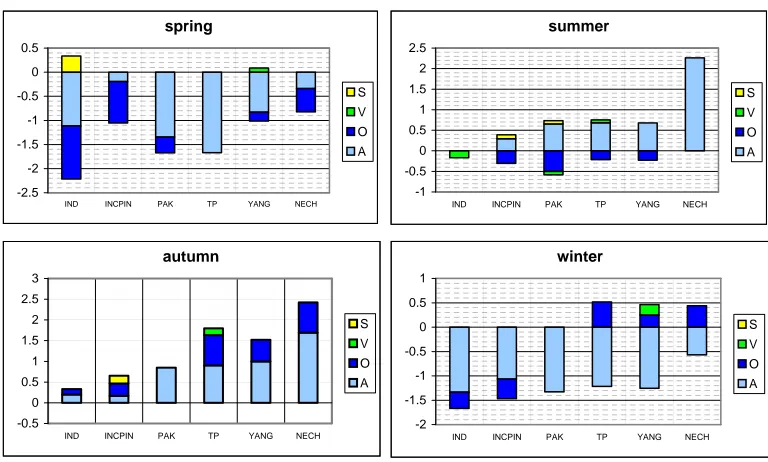Contribution of oceanic and vegetation feedbacks to Holocene climate change in monsoonal Asia
Full text
Figure


![Fig. 2. Seasonal and annual averaged 2m-temperature anomalies [K] between mid-Holocene and present-day climate resulting from thecoupled experiment AOV](https://thumb-us.123doks.com/thumbv2/123dok_us/52941.1505595/6.595.103.485.62.567/seasonal-averaged-temperature-anomalies-holocene-resulting-thecoupled-experiment.webp)
![Fig. 3. Same as Fig. 2, but for seasonal and annual averaged precipitation anomalies [mm/day]](https://thumb-us.123doks.com/thumbv2/123dok_us/52941.1505595/7.595.96.490.61.574/fig-fig-seasonal-annual-averaged-precipitation-anomalies-day.webp)
Related documents
Results of the survey are categorized into the following four areas: primary method used to conduct student evaluations, Internet collection of student evaluation data,
Collaborative Assessment and Management of Suicidality training: The effect on the knowledge, skills, and attitudes of mental health professionals and trainees. Dissertation
Figure 3.11: Assessment results for Digital forensics concept maps using Topological taxonomy. 3.4.3 Waterloo
Although formal hunting status is found significant when individually entered, the variation it explains is not significant enough (or unique enough) to be included in the
Surgical Site Infection Reduction Through Nasal Decolonization Prior to Surgery..
Rather than focusing exclusively on incentives and expectations about the base rate of errors, the field interview study examines payoffs of error detection more broadly by
Among 1,781 participants with CKD stages 2–4 from the Modification of Diet in Renal Disease Study, compared with serum bicarbonate levels ≥26 mEq/ L, levels ≤20 mEq/L were
According to 2006-survey study results the figure 7 shows that if the tramway capacity can support just 60% of the passengers, it will be profitable to set up the ticket cost of the


![Fig. 6. Same as Fig. 5, but for evaporation anomalies [mm/day]. Please note the different scales.](https://thumb-us.123doks.com/thumbv2/123dok_us/52941.1505595/10.595.107.493.67.346/fig-fig-evaporation-anomalies-day-note-different-scales.webp)

![Fig. 7. Simulated differences in seasonal sea-surface-temperature [K] between mid-Holocene and present-day climate.](https://thumb-us.123doks.com/thumbv2/123dok_us/52941.1505595/12.595.98.495.53.453/simulated-differences-seasonal-surface-temperature-holocene-present-climate.webp)
![Fig. 8. Same as Fig. 5, but for precipitation anomalies [mm/day]. Please note the change in scales.](https://thumb-us.123doks.com/thumbv2/123dok_us/52941.1505595/13.595.102.497.69.344/fig-fig-precipitation-anomalies-day-note-change-scales.webp)